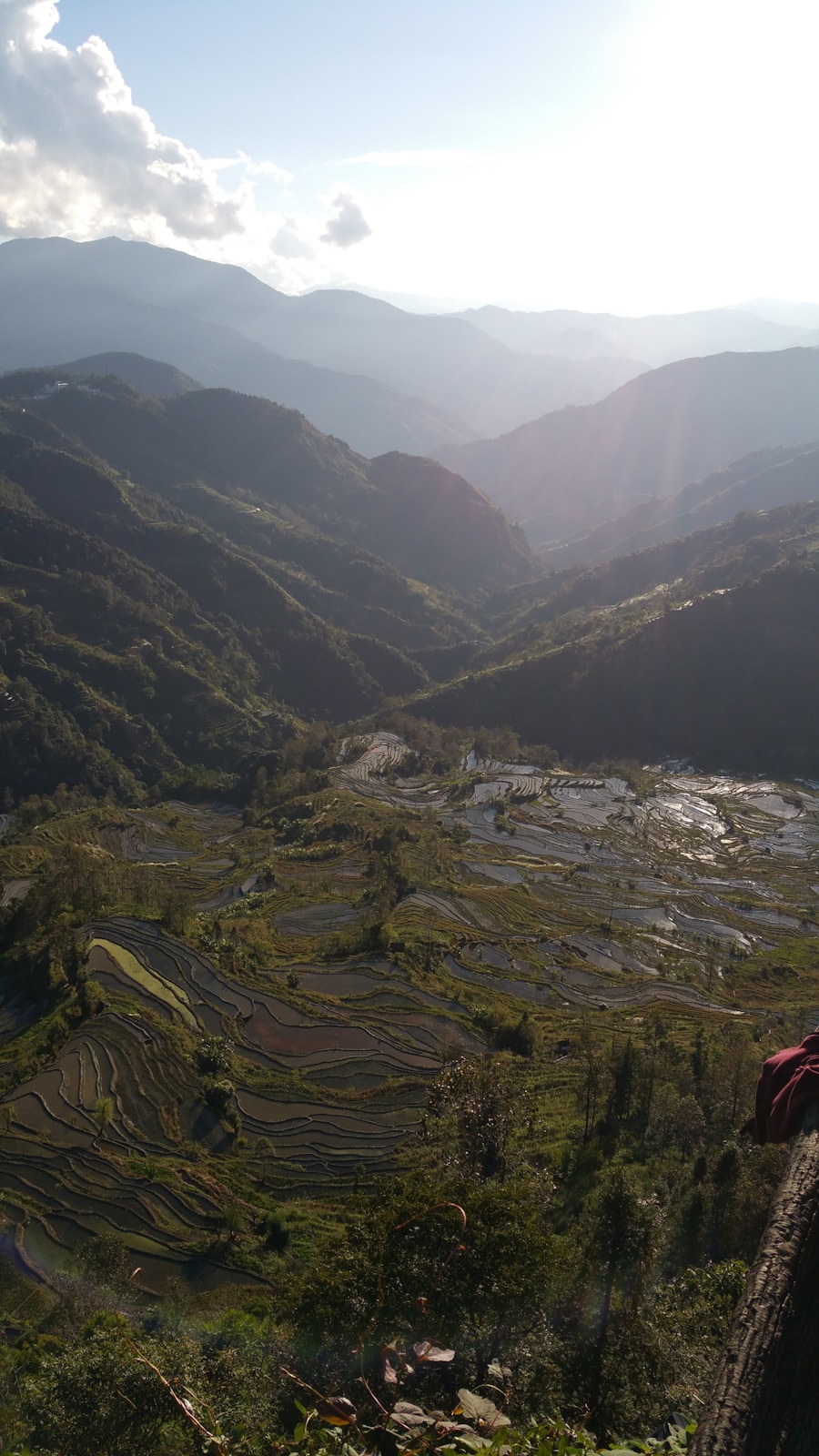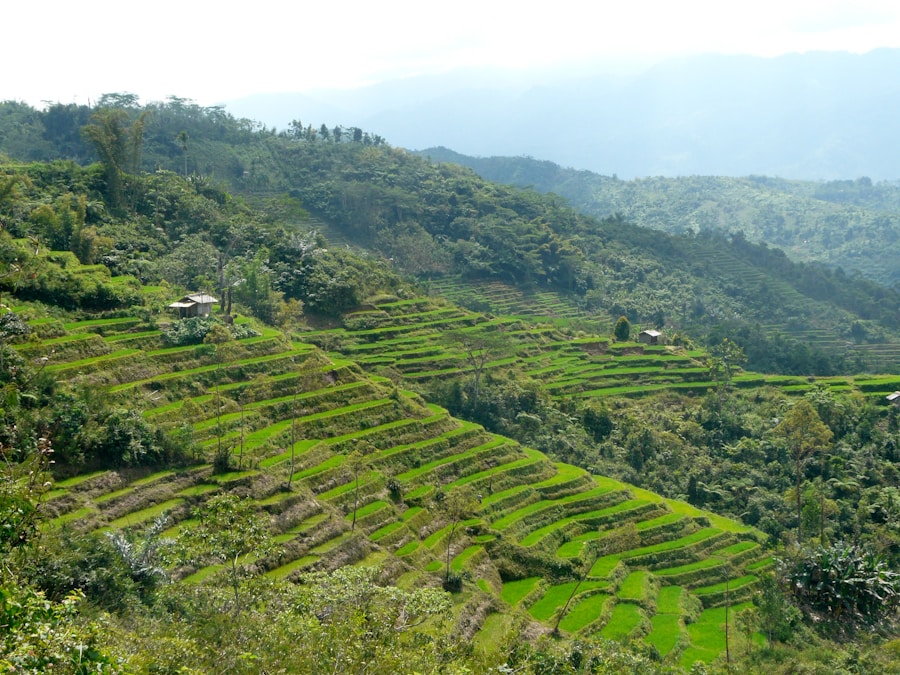Download links
How to install Banaue Rice Terraces: A Cultural Wonder APK?
1. Tap the downloaded Banaue Rice Terraces: A Cultural Wonder APK file.
2. Touch install.
3. Follow the steps on the screen.
Description
The Banaue Rice Terraces, often referred to as the “Eighth Wonder of the World,” boast a rich history that dates back over 2,000 years. These terraces were carved into the mountains of Ifugao province in the Philippines by the indigenous Ifugao people, who developed sophisticated agricultural techniques to cultivate rice in a challenging mountainous environment. The construction of these terraces is believed to have begun around 2000 B.C., although some estimates suggest that the terraces may have been developed even earlier.
The Ifugao people utilized simple tools made from bamboo and stone, demonstrating remarkable ingenuity and resilience in their efforts to transform steep slopes into arable land. The terraces are not merely agricultural structures; they are a testament to the Ifugao’s deep connection with their environment and their understanding of sustainable farming practices. The intricate irrigation systems that accompany the terraces are a marvel in themselves, allowing water to flow from the mountains down to the fields in a controlled manner.
This system not only maximizes water efficiency but also minimizes soil erosion, showcasing the Ifugao’s advanced knowledge of hydrology and ecology. Over centuries, these terraces have been expanded and maintained through generations, reflecting a cultural heritage that is both rich and complex.
Key Takeaways
- The Banaue Rice Terraces were built over 2,000 years ago by the Ifugao people without the use of modern tools and machinery, showcasing their advanced engineering and agricultural knowledge.
- The terraces are not only a marvel of engineering, but also hold great cultural significance for the Ifugao people, representing their connection to the land and their ancestors.
- The introduction of tourism has brought economic opportunities to the region, but also poses a threat to the preservation of the terraces due to environmental degradation and overdevelopment.
- Efforts to preserve the Banaue Rice Terraces include UNESCO’s designation as a World Heritage Site and the implementation of sustainable tourism practices to minimize negative impacts.
- The future of the Banaue Rice Terraces relies on the balance between tourism and preservation efforts, as well as the continued involvement and support of the local community and government.
The Cultural Significance of the Banaue Rice Terraces
Sacred Landscapes and Cultural Identity
The terraces are not just fields, but sacred landscapes that represent the very essence of Ifugao culture. Rice cultivation is central to their way of life, serving as a staple food and a symbol of life and prosperity.
Rituals and Ceremonies: A Harmonious Blend of Agriculture and Spirituality
The planting and harvesting seasons are marked by rituals and ceremonies that honor ancestral spirits and seek blessings for a bountiful harvest. These practices highlight the terraces’ role as a living cultural landscape, where agriculture and spirituality coexist harmoniously.
A Symbol of Resilience, Ingenuity, and Cultural Richness
The rice terraces are a source of pride for the Ifugao people, representing their resilience and ingenuity in adapting to their environment. They are often seen as a symbol of cultural identity, reflecting the values of cooperation, community, and respect for nature that are integral to Ifugao society.
The Engineering Marvel of the Banaue Rice Terraces

The engineering prowess demonstrated in the construction of the Banaue Rice Terraces is nothing short of extraordinary. Spanning approximately 2,000 square kilometers, these terraces are an intricate network of stone walls and irrigation channels that have been meticulously crafted to adapt to the mountainous terrain. The terraces rise to an elevation of about 1,500 meters above sea level, showcasing not only the physical labor involved in their creation but also the advanced understanding of agricultural engineering possessed by the Ifugao people.
Each terrace is designed to hold water efficiently while preventing soil erosion, a feat that requires precise calculations and an intimate knowledge of local geology. The irrigation system that supports these terraces is particularly noteworthy. Water is sourced from mountain springs and channeled through a series of dikes and canals that distribute it evenly across the fields.
This system is not only functional but also sustainable, as it minimizes water waste and ensures that each terrace receives adequate moisture for rice cultivation. The careful planning involved in this engineering marvel reflects a deep understanding of hydrology and environmental stewardship. The terraces have withstood the test of time, enduring natural disasters such as landslides and typhoons, thanks to their robust design and ongoing maintenance by local farmers.
The Impact of Tourism on the Banaue Rice Terraces
| Year | Number of Tourists | Revenue Generated (in PHP) | Employment Generated |
|---|---|---|---|
| 2015 | 150,000 | 50,000,000 | 1,200 |
| 2016 | 160,000 | 55,000,000 | 1,300 |
| 2017 | 170,000 | 60,000,000 | 1,400 |
| 2018 | 180,000 | 65,000,000 | 1,500 |
| 2019 | 190,000 | 70,000,000 | 1,600 |
Tourism has had a profound impact on the Banaue Rice Terraces, bringing both opportunities and challenges to this UNESCO World Heritage Site. On one hand, increased tourism has provided economic benefits to the local community, creating jobs in hospitality, guiding services, and local crafts. Visitors from around the world flock to Banaue to witness its breathtaking landscapes and experience the rich culture of the Ifugao people.
This influx of tourists has led to investments in infrastructure, such as roads and accommodations, which have improved access to the terraces and enhanced the overall visitor experience. However, this surge in tourism also poses significant challenges. The delicate ecosystem surrounding the rice terraces is at risk due to increased foot traffic, littering, and potential damage from poorly managed tourist activities.
The influx of visitors can lead to soil erosion and degradation of the terraces if not properly managed. Additionally, there is concern about cultural commodification, where traditional practices may be altered or commercialized to cater to tourist expectations rather than preserving their authentic significance. Balancing tourism with conservation efforts is crucial to ensure that the cultural integrity and ecological health of the Banaue Rice Terraces are maintained for future generations.
The Preservation Efforts for the Banaue Rice Terraces
Preservation efforts for the Banaue Rice Terraces have become increasingly important as both environmental pressures and tourism continue to grow.
One notable effort is the establishment of sustainable tourism practices that promote responsible visitation while educating tourists about the significance of the terraces.
Guided tours often include discussions on traditional farming methods, cultural rituals, and environmental conservation, fostering a deeper appreciation for the site among visitors. In addition to promoting sustainable tourism, there are ongoing initiatives focused on restoring and maintaining the terraces themselves. Community-led programs encourage local farmers to engage in traditional farming practices that have been passed down through generations.
These practices not only preserve agricultural biodiversity but also enhance soil health and resilience against climate change impacts. Furthermore, educational campaigns aim to raise awareness about the importance of preserving this cultural landscape among younger generations, ensuring that traditional knowledge is passed on and that future custodians of the terraces are well-equipped to continue their stewardship.
The Future of the Banaue Rice Terraces

Adapting to Climate Change
Climate change brings altered rainfall patterns and increased temperatures, making it essential for local farmers to adapt their practices. Innovative approaches like agroecology, which integrates ecological principles into farming, are being explored as potential solutions to enhance resilience against climate impacts while preserving cultural heritage.
Collaboration and Investment
Continued collaboration between local communities, government agencies, and international organizations is vital to ensuring that preservation efforts remain effective. Investment in research and development can lead to improved agricultural techniques that respect traditional practices while incorporating modern science.
By fostering a sense of stewardship among local communities and promoting responsible tourism practices, it is possible to ensure that this remarkable cultural landscape endures for generations to come.
If you are interested in learning more about the cultural significance of the Banaue Rice Terraces, you may want to check out this article on tg777.mom. The article delves into the history and preservation efforts of this UNESCO World Heritage Site, shedding light on the traditional farming practices of the Ifugao people. It provides a deeper understanding of the terraces’ importance in Philippine culture and heritage.
FAQs
What are the Banaue Rice Terraces?
The Banaue Rice Terraces are ancient terraces carved into the mountains of Ifugao in the Philippines. They are often referred to as the “Eighth Wonder of the World” and are a UNESCO World Heritage Site.
How were the Banaue Rice Terraces created?
The terraces were hand-carved over 2,000 years ago by the Ifugao people using minimal equipment, mostly using their bare hands and simple tools. The terraces were created to make the mountainous terrain suitable for rice cultivation.
How large are the Banaue Rice Terraces?
The Banaue Rice Terraces cover approximately 10,360 square kilometers of mountainside. They are often referred to as the “stairway to the sky” due to their impressive scale and design.
What is the significance of the Banaue Rice Terraces?
The terraces are not only a stunning example of ancient engineering and agricultural practices, but they also hold cultural and historical significance for the Ifugao people. They are a symbol of their heritage and traditional farming methods.
Can visitors explore the Banaue Rice Terraces?
Yes, visitors are welcome to explore the Banaue Rice Terraces. There are hiking trails and viewpoints that offer breathtaking views of the terraces and the surrounding landscape. It is important to respect the local customs and environment while visiting.





